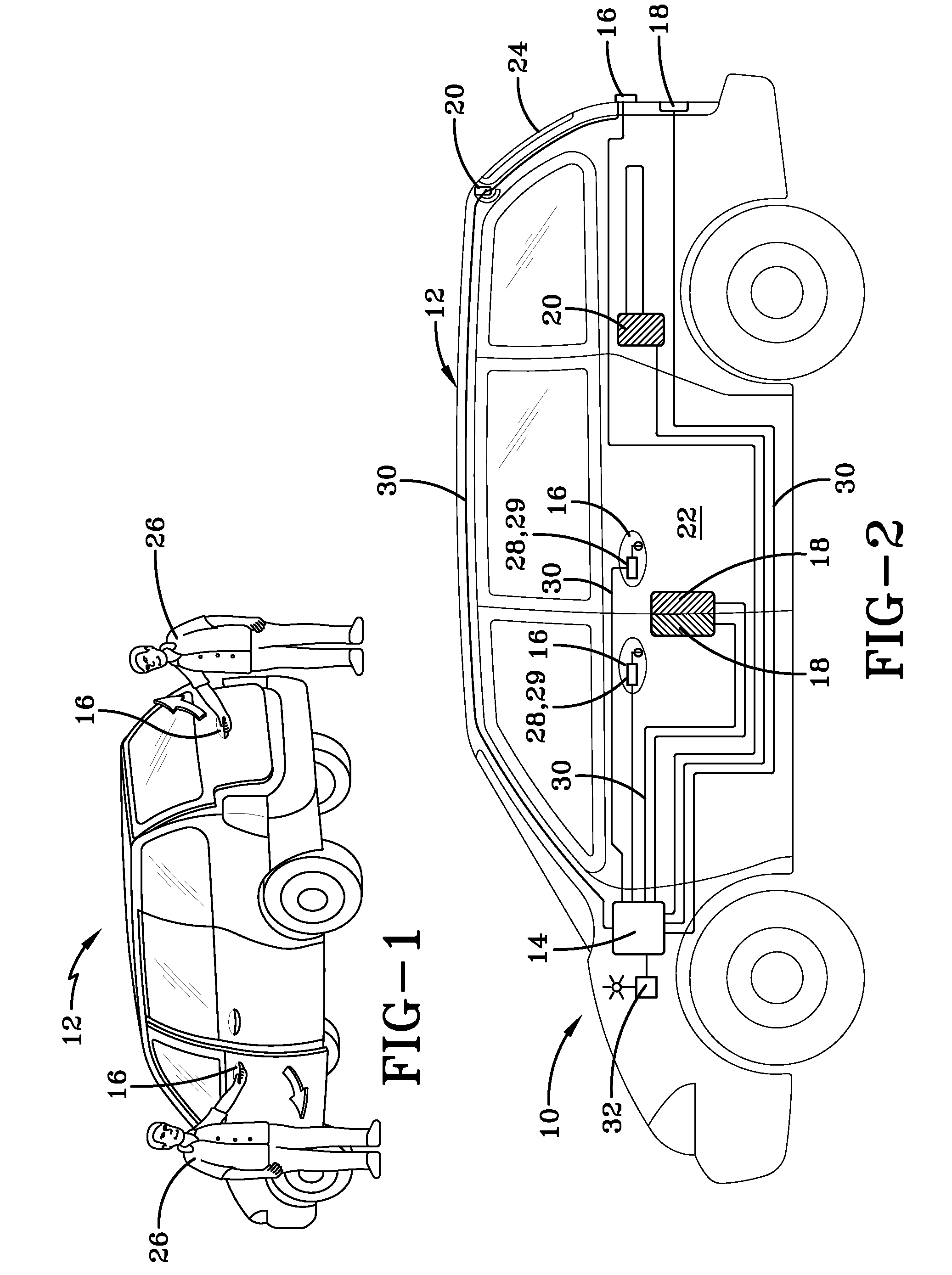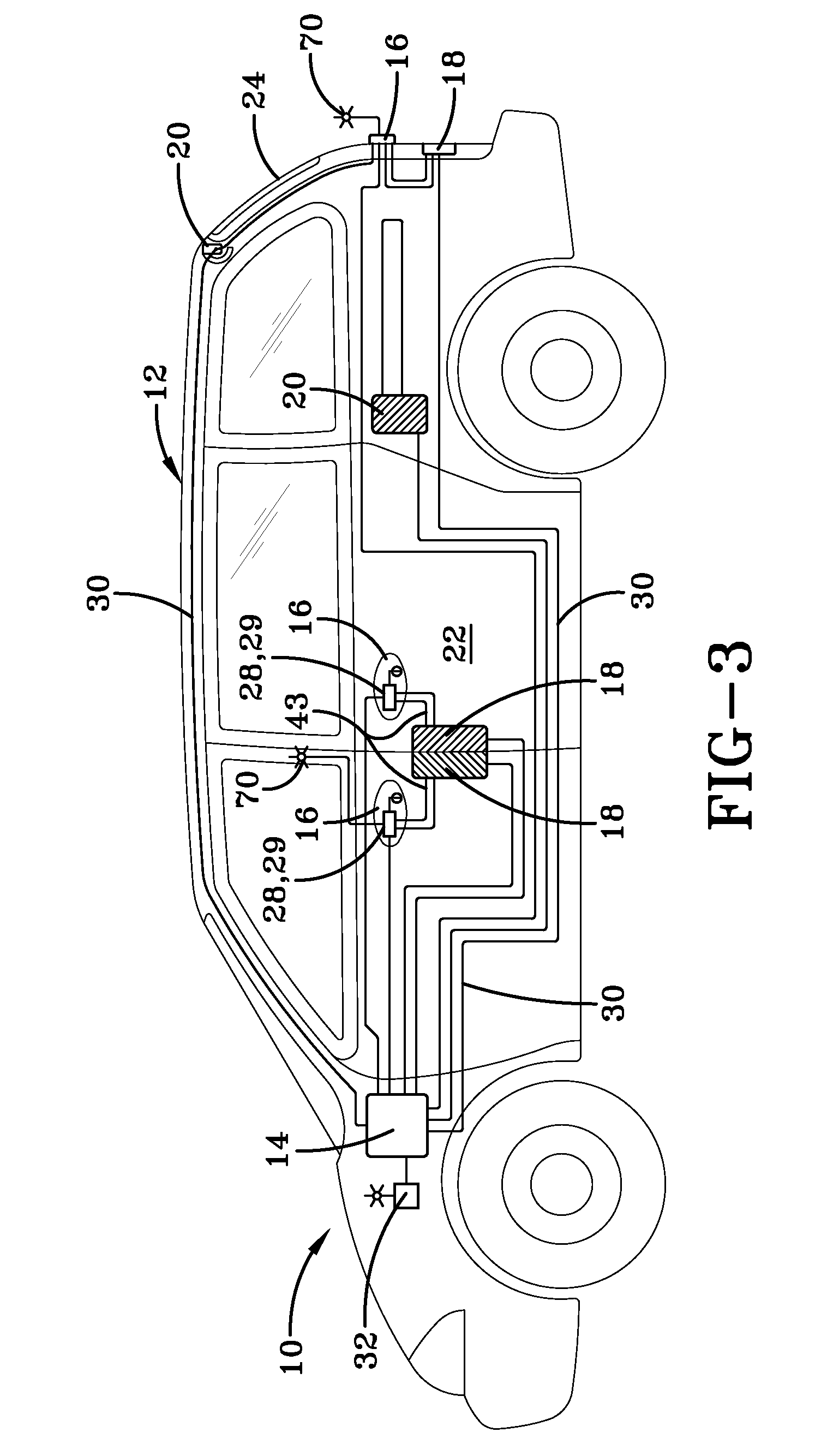Door handle
a door handle and handle technology, applied in the field of semiautomatic systems, can solve the problems of automatic system failure once again, user frustration,
- Summary
- Abstract
- Description
- Claims
- Application Information
AI Technical Summary
Benefits of technology
Problems solved by technology
Method used
Image
Examples
Embodiment Construction
[0015]It is to be understood the present invention may be embodied in other specific forms without departing from the scope of the invention. The illustrated and described embodiments are to be considered in all respects only as illustrative and not restrictive. The scope of the invention is, therefore, indicated by the appended claims rather than by the description. All changes that come within the meaning and range of equivalency of the claims and included elements are to be embraced within their scope.
[0016]Referring now to FIGS. 1 and 2, an embodiment of the present invention is shown and described. The invention includes, among other things, a system arrangement 10 that is suitable for use in a vehicle 12 to facilitate opening or unlatching of various access doors, including without limitation, vehicle doors, liftgates, panels, trunk lids, hoods or other points of access. System 10 can be used for example, without limitation, in connection with trunk latches, flip-glass latches...
PUM
 Login to View More
Login to View More Abstract
Description
Claims
Application Information
 Login to View More
Login to View More - R&D
- Intellectual Property
- Life Sciences
- Materials
- Tech Scout
- Unparalleled Data Quality
- Higher Quality Content
- 60% Fewer Hallucinations
Browse by: Latest US Patents, China's latest patents, Technical Efficacy Thesaurus, Application Domain, Technology Topic, Popular Technical Reports.
© 2025 PatSnap. All rights reserved.Legal|Privacy policy|Modern Slavery Act Transparency Statement|Sitemap|About US| Contact US: help@patsnap.com



